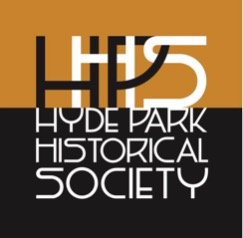WHO WAS ALICE FORD?
The HPHS Headquarters once served as a Lunch Room/Diner, but it was not the only Lunch Room around. J & P Lunch was located out of a window at 55th and Lake Park sometime before the 1940s. The other Lunch Room we know about was located at 5616 Harper, and newspapers tell us it was operated by Alice Ford.
WHAT WE KNOW
ANTI BLACK SENTIMENTS
CRIMINALIZATION OF SEX WORK
PROHIBITION ERA
She was a Black woman that operated a Lunch Room at 5616 S Harper
On February 13, 1926 she was arrested the Hyde Park police saw a man named William Edwards leave her lunch room and searched him
She was brought in front of Judge Morgan at 48th and Wabash and he dismissed the charges against her
She was later arrested by federal authorities but no records have been found in our search (thus far) reaching why Many Questions Remain
CAN THINKING ABOUT THE HISTORICAL CONTEXT GIVE US CLUES?
The 1919 Chicago Race Riots were part of a broader context of racial anti-black sentiments in Northern cities during the Great Migration of Blacks from the South to the North. The riots increased political activism within the Black community. In Hyde Park, racial covenants were numerous and increased over the years to follow. Could Alice Ford have been targeted for involvement in civil rights and social justice movements that emerged in response to the racial injustices of the time?
In 1905, Chicago's revised Criminal Code made "prostitution" a crime. The number of laws in the State of Illinois and the City of Chicago grew in the coming years. According to historian Cynthia Blair, during this time period, "Some black sex workers emerge as conscious actors and historical agents—victims in some cases but very often savvy strategists who daily navigated the economic, racial, and spatial terrain that defined turn-of the-century sex work. In addition to traversing the moral and spatial barriers erected by respectable black and white Chicagoans, black prostitutes transformed each sexual exchange into a stepping-stone toward their own financial independence" (Blair C. M. (2018). I've got to make my livin' : black women's sex work in turn-of-the-century Chicago. University of Chicago Press. )
During the Prohibition era in the United States (1920-1933), the landscape for saloons underwent a profound transformation. Speakeasies began to pop up in every metropolitan city. Many were disguised as lunch rooms, soda shops, performance lounges, and even garages. It is likely speakeasies would have existed in the section of Hyde Park Alice's Lunch Room was located. The 18th Amendment to the U.S. Constitution, along with the Volstead Act, criminalized the manufacture, sale, and transportation of alcoholic beverages. This sweeping policy change had a substantial impact on businesses that had traditionally relied on the sale of alcohol. Given that Alice Ford was later detained by federal authorities, could she have have been running a speakeasy? Or possibly manufacturing alchol?
Think about what else you know about this time in history, imagine what other possibilities could exist that may have resulted in her arrest?
The map above shows the location commercial properties in Hyde Park during the 1920s. The area between 5500-5600 Lake Park was one of the few places that black people could live in this area of Hyde Park during the 1920s It was also the area known as the "saloon district"



